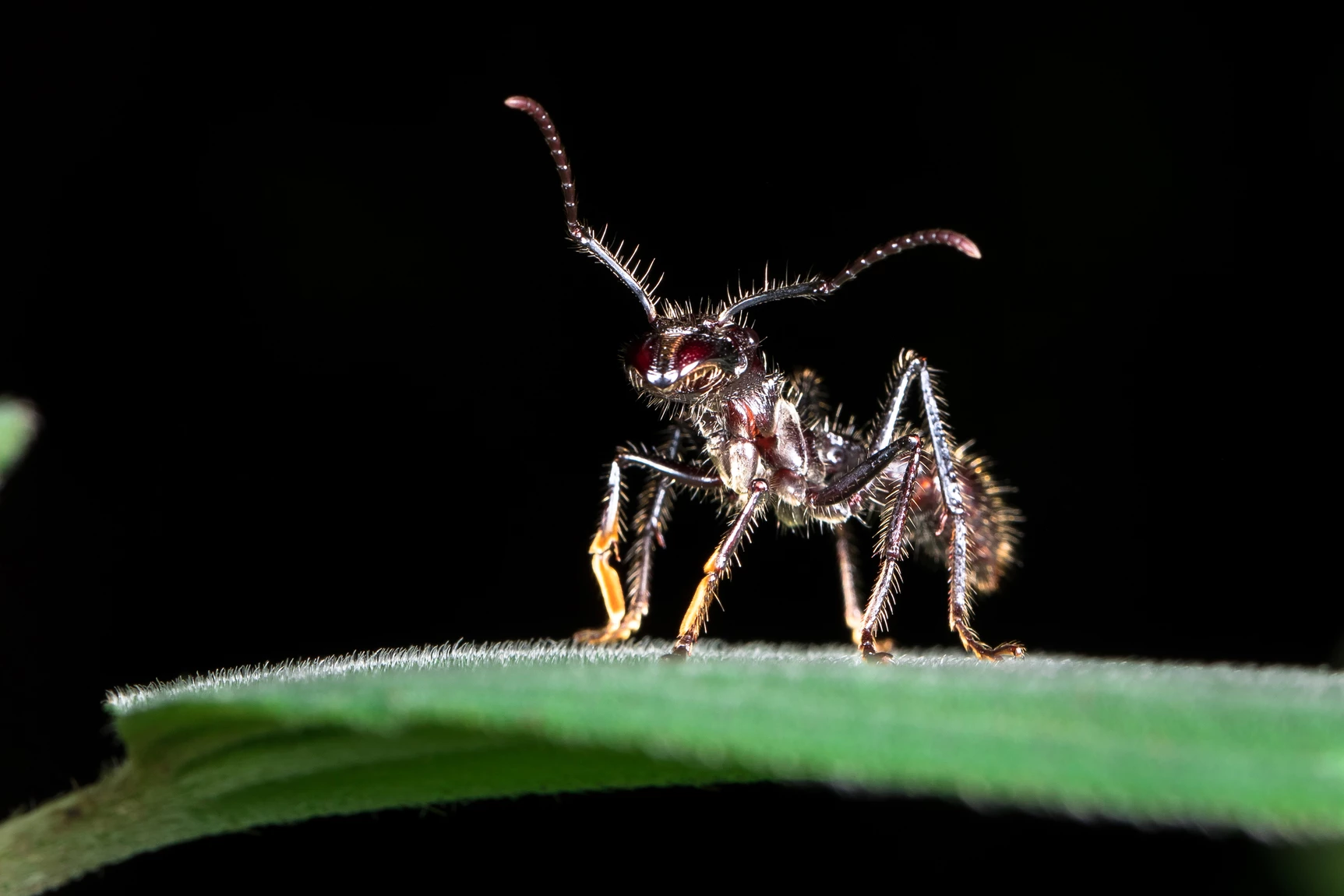Throughout 2023, researchers have looked at pain, especially chronic pain, and its molecular mechanisms, in an effort to find new, targeted ways to effectively resolve the complex condition. We present this year’s top discoveries in pain research.
The world’s most painful sting provides a deeper understanding

Researchers have learned a lot from nature, including insects. This year, the bullet ant, with a sting that causes pain for up to 12 hours and is known for being the most painful sting in the world, provided researchers with a better understanding of how we feel pain.
They discovered that, at the molecular level, bullet ant neurotoxin targets the sodium channels in nerve cells that send pain signals but is unlike other sodium-channel-affecting toxins, with a unique mechanism of action. The toxin binds to the sodium channels longer, translating to a more prolonged pain signal. The information is important for understanding how we feel pain and developing new ways of treating it.
Gene therapy as a non-opioid way of reversing pain

Sodium channels were the focus of other research into chronic pain, something that around a third of the US population lives with. But, with the world in the grips of an opioid epidemic, researchers were keen to develop a non-opioid way of managing chronic pain.
The NaV1.7 sodium channel sits at the end of pain-detecting neurons. CRMP2 is a protein that binds to the channel, modulating sodium entry; the less sodium allowed in, the more the neuron is quietened and the more pain is reduced. So, researchers engineered an adeno-associated virus (AAV) containing a small piece of genetic material to ‘infect’ the NaV1.7 channel with a decoy peptide to disrupt its function. When the engineered virus was given to mice, it took between a week to 10 days for the animals’ pain to be reversed.
Cells responsible for chronic lower back pain identified

Degenerated intervertebral disks can cause chronic lower back pain. In a landmark study, researchers gained a greater understanding of what causes the condition that affects millions.
They found a particular population of pain-linked cells in people with degraded disks but absent in those with healthy or degraded disks that didn’t cause pain. When the researchers placed pain-signaling neurons on one side of a two-chamber chip and pain-linked cells on the other, the neurons grew axons – the fibrous network that nerve signals travel along – in the direction of the pain cells. When healthy cells replaced the pain-linked cells, the neurons didn’t change. The next step is to reprogram the pain-linked cells or populate damaged disks with healthy cells to overpower the problematic ones.
One shot of specialized cells improves function, decreases pain

The typical treatments for chronic lower back pain due to degenerative disk disease (DDD) – physical therapy, anti-inflammatory drugs, corticosteroids, and surgery – are often ineffective or provide short-lived relief.
A new treatment injects specialized cells into the damaged intervertebral disks, encouraging existing cells to grow healthy tissue. Over the course of a three-year trial, 46 patients with chronic back pain received the allograft injection, with 60% reporting more than 50% improvement in their physical function and 70% reporting a significant decrease in pain scores.
Anticancer drug repurposed to treat lower back pain

Rather than developing a new drug, researchers turned to an existing one to treat lower back pain. Navitoclax is an experimental Bcl-2 inhibitor used to treat cancer, but other studies have found that it has more than anticancer properties; it can clear out senolytic cells, cells that have stopped dividing and accumulated, leading to inflammation.
Osteoclasts are cells that have the job of breaking down bone to be remodeled for new tissue. Senescent osteoclasts fail to do their job, causing disks to become porous and allowing the infiltration of nerves that cause lower back pain. In mice, navitoclax targeted and removed senescent osteoclasts, effectively reducing pain and increasing activity. The disks became less porous, and new nerves could not grow into the bones to cause pain.
Scrambling chronic pain signals an effective treatment

Reviewing 381 randomized controlled trials, researchers found that scrambler therapy – delivering electrical stimulation via electrodes to areas surrounding the source of chronic pain – provided significant relief to 80% to 90% of patients.
The idea is that targeting the nerve endings of damaged nerves (and the source of the pain) and replacing the pain signals with ones from neighboring nerves ‘scrambles’ the information that is sent to the brain. Doing this resets the brain so it doesn’t feel pain as badly. After three to 12 half-hour sessions of scrambler therapy, patients experienced substantial pain relief that can be permanent.
A simple treatment for chronic pain?

Sometimes, the treatment for a condition, such as chronic pain, may be a simple one. Researchers investigated the mechanism underlying to transition from acute inflammation and the pain it produces to chronic pain and found that vitamin B3 was key.
Looking closely at mitochondria, the cell’s powerhouses, they found that changes in mitochondrial and metabolic function in sensory neurons disrupted the inflammation pathway that enabled pain to resolve over time, resulting in chronic pain. Where this pathway had been disrupted in mice, the researchers found that the animals were lacking a type of vitamin B3, nicotinamide riboside, following the resolution of the initial pain inflammatory response. Giving them a boost of B3 allowed chronic pain to be bypassed. In another group of mice with inflammation, nicotinamide riboside injections slowed their response to painful stimuli, suggesting their hypersensitivity – a hallmark of chronic pain – had been regulated.
Link between pain and poor sleep discovered

A night spent tossing and turning results in an aching back; the aching back prevents a good night’s sleep. It’s a vicious cycle that’s not uncommon. Researchers discovered the link between pain and poor sleep and a potential way of breaking the cycle.
The key is a neurotransmitter called NADA, which is known to target cannabinoid receptor one in the brain. This receptor plays a role in controlling pain perception, which, as you might’ve guessed from its name, is also targeted by some strains of marijuana. In mice with chronic sleep disruption, NADA levels in the brain were reduced. Although this might not lead to increased pain, the researchers found that it increases our perception of pain. When they gave the sleep-deprived mice more NADA, pain perception decreased.













